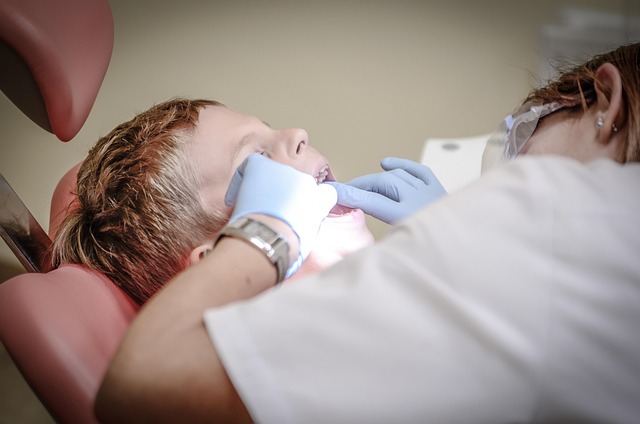Discover Screwless Dental Implant Options: What to Know
If you've been considering dental implants but are concerned about cost or complexity, screwless dental implants may offer an alternative for some patients. These systems can simplify restoration procedures and may reduce chair time and certain fees in specific cases, but suitability and costs vary by clinical circumstance and provider. Learn about benefits, limitations, and whether they might be appropriate given your oral health and budget; consult a dental professional for personalized advice.

Modern dentistry continues to evolve with innovative solutions for tooth replacement, and screwless dental implants have emerged as an alternative to traditional implant systems. These advanced prosthetic devices offer a unique approach to securing artificial teeth, addressing some of the limitations associated with conventional screw-retained implants.
What Are Screwless Dental Implants?
Screwless dental implants, also known as cement-retained implants, use a different attachment mechanism compared to traditional screw-retained systems. Instead of relying on screws to secure the crown or prosthetic tooth to the implant fixture, these implants use dental cement to bond the restoration permanently to the abutment. The implant fixture itself is still surgically placed into the jawbone, but the final restoration attachment differs significantly from conventional methods.
This approach eliminates the need for access holes in the crown that would typically accommodate screws, resulting in a more seamless appearance. The cement-retained method has been used successfully in dentistry for decades and offers specific advantages in certain clinical situations.
Why Are Screwless Implants Becoming a Popular Choice?
The growing popularity of screwless implants stems from several practical advantages they offer over traditional screw-retained systems. Many patients and dentists appreciate the improved aesthetics, as cement-retained restorations eliminate visible screw access holes that can sometimes be seen through the crown material.
Additionally, screwless implants can be more cost-effective in certain situations, as they may require fewer components and potentially simpler laboratory procedures. The cement-retained approach also allows for better control over the emergence profile of the crown, which can result in more natural-looking gum contours around the implant.
From a maintenance perspective, patients often find screwless implants easier to clean since there are no screw access holes that might trap food particles or bacteria. This can contribute to better long-term oral hygiene around the implant site.
How Do Screwless Implants Work?
The functioning of screwless dental implants involves a multi-stage process that begins with the surgical placement of the titanium implant fixture into the jawbone. After a healing period of several months, during which osseointegration occurs, an abutment is attached to the implant fixture.
The final crown or restoration is then cemented onto this abutment using dental cement, creating a permanent bond. This cement acts as the sole means of retention, eliminating the need for screws to secure the prosthetic tooth. The cement used is specifically designed for dental applications and provides strong, long-lasting adhesion.
The process requires precise fitting of the crown to the abutment, as the cement-retained method relies entirely on the mechanical retention provided by the cement and the fit between the crown and abutment surfaces.
The Key Benefits of Screwless Dental Implants
Screwless dental implants offer several distinct advantages that make them attractive options for many patients. The primary benefit is improved aesthetics, as the absence of screw access holes allows for more natural-looking crowns, particularly in the visible front teeth area.
Another significant advantage is the potential for better emergence profiles, which refers to how the crown appears to emerge from the gum tissue. Without the constraint of screw access, dental technicians have greater freedom in designing the crown shape, potentially achieving more natural gum contours.
The cement-retained approach can also be more forgiving in cases where the implant angle is not ideal, as slight angulation issues can be compensated for during the crown fabrication process. This flexibility can be particularly valuable in complex cases where bone anatomy limits optimal implant placement.
| Provider Type | Service Offered | Cost Estimation (AUD) |
|---|---|---|
| General Dentist | Single screwless implant | $3,000 - $5,000 |
| Specialist Periodontist | Complex screwless cases | $4,500 - $7,000 |
| Prosthodontist | Full mouth rehabilitation | $15,000 - $35,000 |
| Dental Clinic Chains | Package deals | $2,800 - $4,500 |
Prices, rates, or cost estimates mentioned in this article are based on the latest available information but may change over time. Independent research is advised before making financial decisions.
Are Screwless Implants Suitable for Everyone?
While screwless dental implants offer numerous benefits, they are not necessarily the best choice for every patient or clinical situation. The suitability of cement-retained implants depends on various factors, including the location of the missing tooth, the patient’s oral hygiene habits, and the specific clinical circumstances.
One consideration is that cement-retained implants can be more challenging to remove if problems arise, as the cement creates a permanent bond. In contrast, screw-retained implants can be easily unscrewed for maintenance or replacement. Patients with a history of peri-implantitis or other implant complications might benefit more from the retrievability of screw-retained systems.
The location of the implant also plays a role in determining suitability. Front teeth, where aesthetics are paramount, often benefit from the screwless approach, while back teeth, where function is more important than appearance, might be better served with screw-retained systems.
Screwless dental implants represent a valuable option in the spectrum of tooth replacement solutions, offering specific advantages in aesthetics and functionality. The decision between screwless and traditional implant systems should be made in consultation with a qualified dental professional who can assess individual needs and circumstances. Understanding these options empowers patients to make informed decisions about their dental health and restoration choices.
This article is for informational purposes only and should not be considered medical advice. Please consult a qualified healthcare professional for personalized guidance and treatment.




